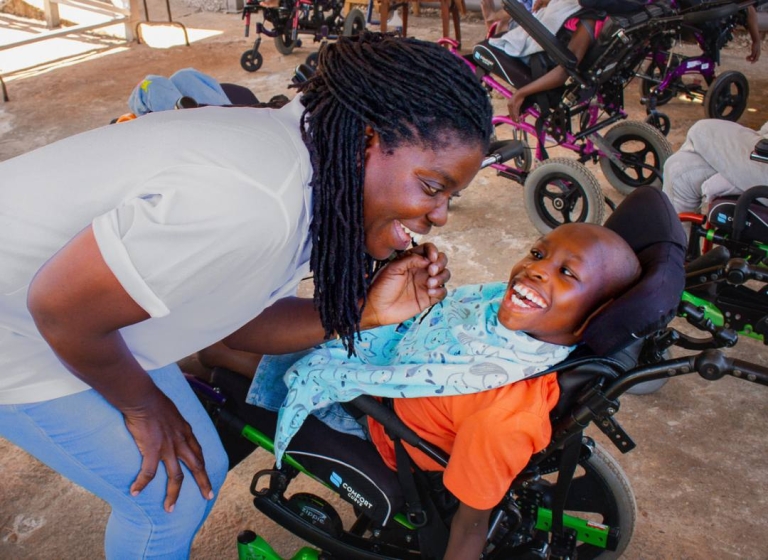This month, we recognize Cerebral Palsy Awareness Day and Hydrocephalus Awareness Day, shining a light on two conditions that impact many of the children and adults in the care of Mustard Seed Communities.
Through dedicated medical care, education, therapy, and compassionate support, we honor each person’s right to grow, thrive, and reach their fullest potential.

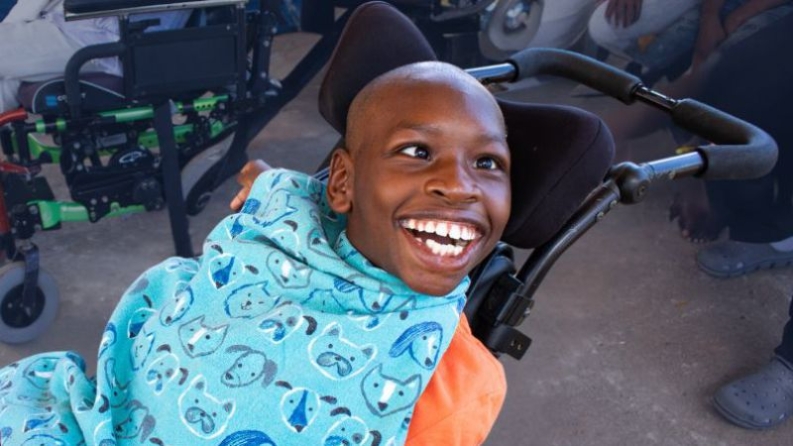
Mark was born with cerebral palsy. He is nonverbal and moves with a wheelchair, and he enjoys noticing when his smile spreads to the faces around him.
By learning more about cerebral palsy and how it impacts Mark’s day-to-day life, our caregivers and volunteers deliver customized care that recognizes Mark’s needs as a whole person – physical therapy to stretch his muscles, a diet that he can safely consume each day, and friendship that honors him as an equal.
We put together some information about cerebral palsy and hydrocephalus that can help provide better care and love for people impacted by these conditions.
What is cerebral palsy (CP)?
Cerebral palsy refers to a group of neurological disorders involving motor development, body movement, muscle tone, posture, and the ability to move about while maintaining balance and posture.
Individuals with CP may produce involuntary spastic movements, have exaggerated reflexes, or rigid and stiff limbs. Its effects can be managed with treatment.
How common is CP?
Globally, CP is the most common physical disability in childhood with 1 in 500 babies diagnosed. Among these individuals:
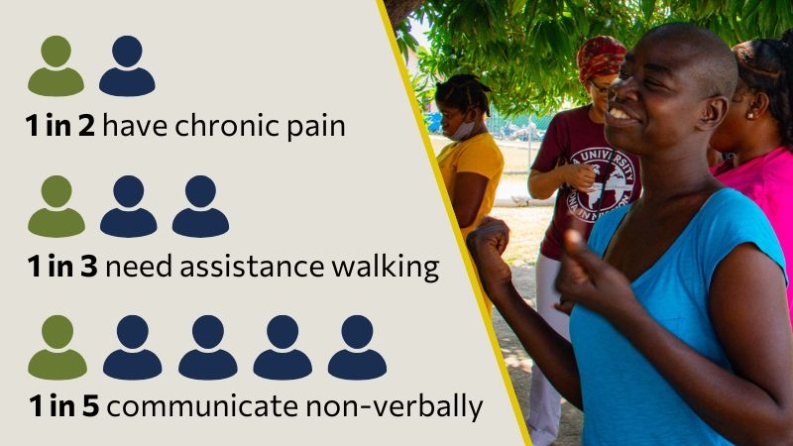
How does CP impact mobility?
Oftentimes, the individual affected by CP knows what it is they want to achieve when making movements, but there is a disconnect between what they are thinking and what their body actually does.
- Individuals with CP may favor one side of the body; with one side being stronger, the weaker side of the body may have smaller body parts than the stronger side.
- Muscles may be held very tight; releasing or relaxing the muscles can be very difficult and may become more difficult over time.
- Fine motor skills are affected where precision is required (e.g. picking up an object).
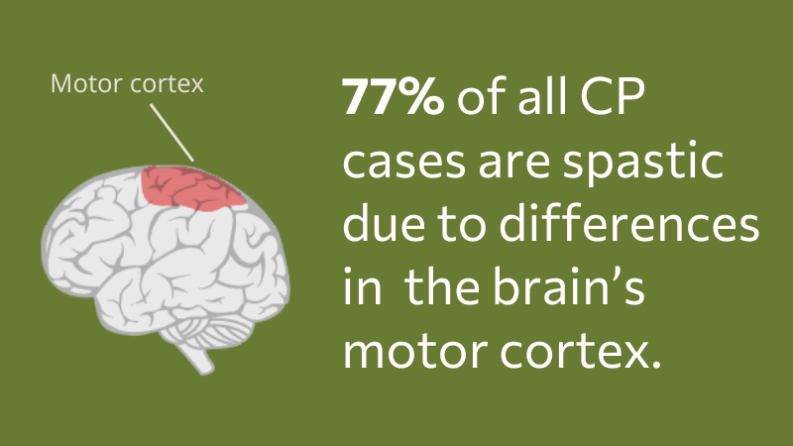
There are five types of cerebral palsy: spastic, athetoid (dyskinetic), ataxic, hypotonic, and mixed type. Common symptoms of the most common type, spastic, include contractures (permanently tightened muscles or joints), difficulty crawling or walking, and stiff muscles.
How does it impact nutritional needs?
CP can affect the muscles that open and close the mouth or move the lips and tongue, causing chewing and swallowing to be difficult. With frequent eating and swallowing problems occurring, poor nutritional intake and malnutrition can cause the individual to be severely underweight. Difficulty holding a bottle, sucking, and drinking leads to dehydration very quickly. This is why many residents at MSC are on a schedule for caregivers to feed them meals each day.
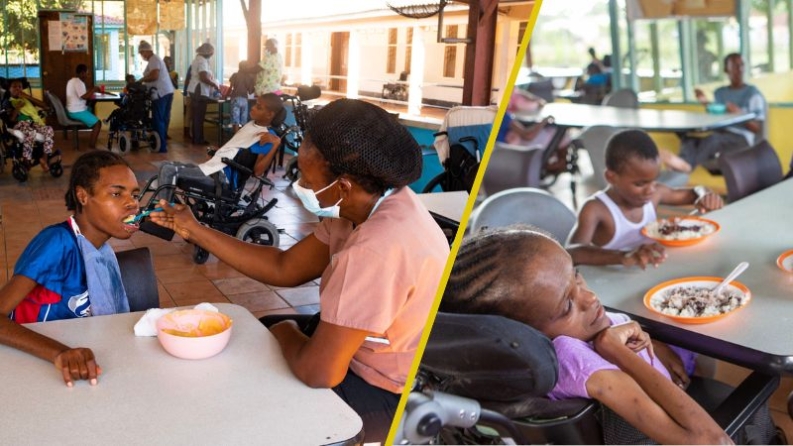
How does it impact speech and communication?
CP can affect an individual’s ability to coordinate muscles in their mouth needed for speech. Whether they use verbal or non-verbal communication, they are aware and are able to understand what is happening and what is said around them.

Hydrocephalus can be a cause and a secondary effect of cerebral palsy. The two share several causes and possibility for co-occurrence.
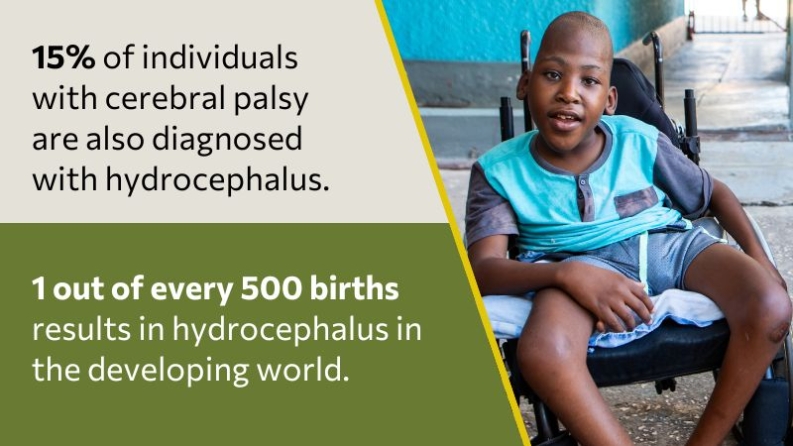
What is hydrocephalus?
Hydrocephalus is the buildup of fluid in the cavities within the brain, increasing the size of ventricles and putting extra pressure on the brain.
The pressure of too much cerebrospinal fluid caused by hydrocephalus can alter brain tissues and cause a range of brain function differences.
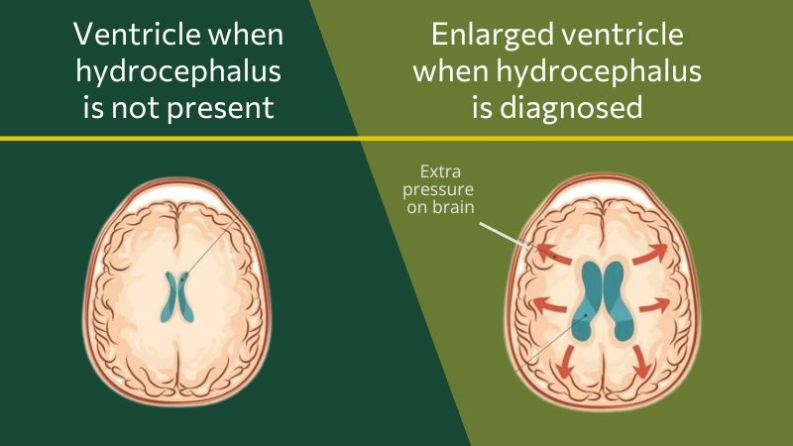
How common is it?
1 out of every 500 births results in hydrocephalus. Causes may include prenatal complications or infections.
Developing countries face the greatest burden of pediatric hydrocephalus as they often have higher birth rates and greater risks of neonatal infections. Surgical treatment can restore and maintain typical cerebrospinal fluid levels, but this is often hard to acquire in developing countries.
How does it impact mobility?
The main symptom of hydrocephalus is a larger head than average. This can cause nausea, sleepiness, seizures, and differences in muscle tone and strength.
Hydrocephalus may also bring about stiff or floppy muscle tone, legs that cross, or seizures.

How should mission volunteers interact with residents of MSC with CP and/or hydrocephalus to respect their needs?
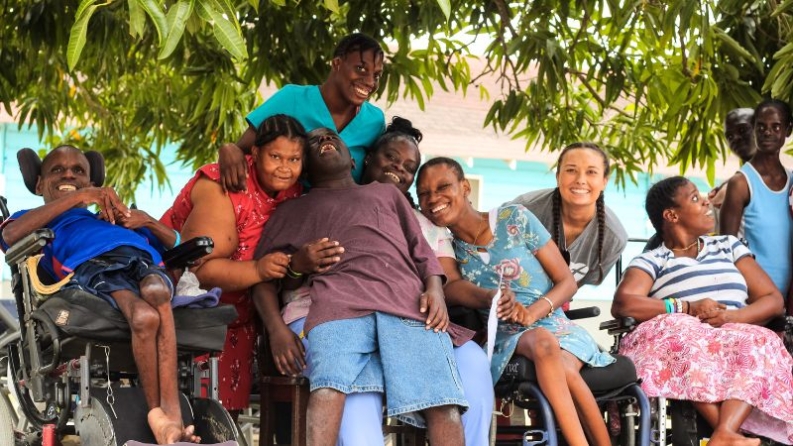
Remember that individuals affected by cerebral palsy or hydrocephalus may require a high level of care and that they, like all people, have great potential and deserve to thrive.
- Communication matters: regardless of the method of communicating, every individual deserves to express themself! Speech, gestures, and facial expression are all valid ways to communicate.
- Remain positive: avoid being negative about a resident’s disability – instead, focus on the many things residents can do.
- Have patience: do not rush a resident through an interaction and learn to lean into the value of silence.
- Respect personal space: just as with any other person, be aware that they have ownership of their own self. We can address their needs while respecting their autonomy! Remember that the resident and their caregivers are the experts.
Central to Mustard Seed Communities’ ethos of care is the dignity of every individual and their capacity to give and receive endless love.
Inspired by the compassion of Jesus Christ, we approach people across every difference with equal respect.
Healing and hope extends widely in our bodies and our souls – across all conditions, we are honored to encounter the soul of another person.
Thank you to the following sources for providing information on cerebral palsy and hydrocephalus for our education:
Cerebral Palsy Research Network | CDC Archive | Stanford Health | Cerebral Palsy Guide | National Institute of Neurological Disorders and Stroke
 Education
Education
